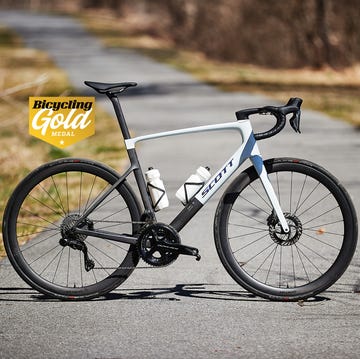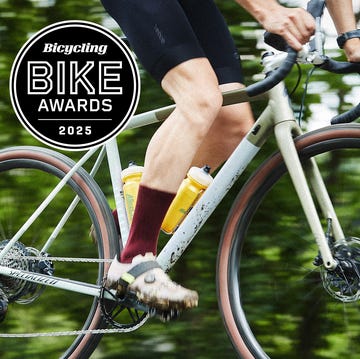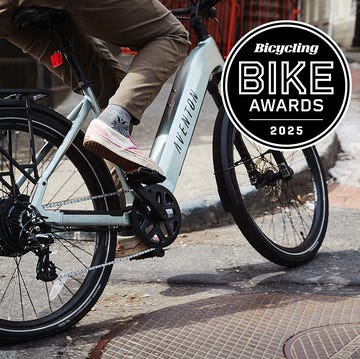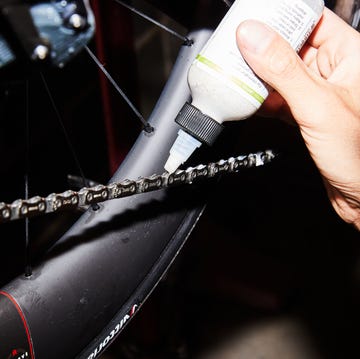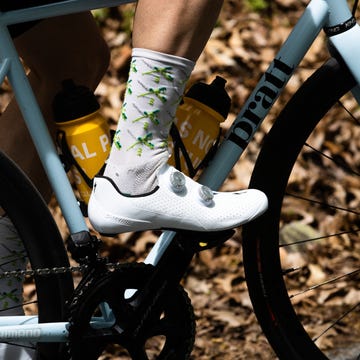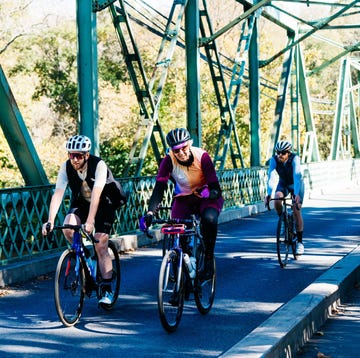When launched in 2024, SRAM’s AXS Transmission—AKA T-Type—drivetrains with hangerless direct-mount derailleurs design was a significant milestone for the company and for the shape of mountain bikes (and more).
They were incredibly durable, with no hanger to bend or break, and they offered hyper-smooth and nearly flawless shifting even under massive loads. SRAM also made the T-Type derailleurs rebuildable, so any damage could be fixed without purchasing an all-new unit.
The common theme was that every T-Type derailleur was for electronic shifting. This aligned with SRAM’s recent drivetrain developments. In the past five-plus years, SRAM has rolled out numerous new and revised electronic drivetrains but only one new mechanical drivetrain—Apex 1x12 for gravel bikes.
It seemed that SRAM had gone all in on electronic and was largely done with mechanical systems for high-performance bikes. They were not. Starting today, you can get SRAM’s most durable design and smoothest shifts packaged with mechanical shifting.
SRAM mechanical shifting lives on with the launch of two new 1x12 mountain bike groups—Eagle 90 and Eagle 70. Like their electronically shifting siblings, these two rear derailleurs employ the robust “Full Mount” frame interface and replaceable parts.
The Eagle 90 and Eagle 70 naming doesn’t align with previous SRAM mountain bike groups, but in my estimation, Eagle 90 splits the difference between GX and NX, while Eagle 70 is about halfway between NX and SX. And although SRAM is describing Eagle 90 and 70 as new “groups,” they are fully compatible with the same chains, cassettes, cranks, and chainrings as AXS T-Type.
Eagle 90
Prices with weights from my scale
• Derailleur: $190, 389 grams
• Shifter: $50, 117 grams (no clamp)
• Crank: $155, 811 grams (DUB axle, 165mm w/32T steel ring and bash guards)
• Chain (CN-TTYP-GX): $50, 283 grams (126 links)
• Cassette (XS1275): $250, 443 grams
• Groupset in box (derailleur, shifter w/Clamp, crankset w/chainring, GX chain, XS-1275 cassette): $670
Eagle 70
Prices with claimed weights
• Derailleur: $125, 415 grams
• Shifter: $30, 145 grams
• Crank: $90, 895 grams (DUB axle, sold with 32t steel ring)
• Chain (CN-TTYP-70): $30, 270 grams
• Cassette (XS1270): $215, 565 grams
While these new groups clearly aim to capture OEM spec on bikes—unpowered and ebikes—below the GX AXS T-Type threshold, they’re also a compelling option for riders who would rather ride without motors, electronics, and battery-powered components.
Most will likely experience Eagle 90/70 as parts pre-installed on a new bike, but if you are installing a system, I found the process very easy.
To run Eagle 90 or Eagle 70, you need a frame with a UDH dropout, plus mechanical routing. While UDH is almost a given on modern mountain bike frames, mechanical routing is not. Many brands are building their frames, particularly at the higher end, with the expectation that riders will run SRAM’s wireless parts.
Other than running cable and housing from the shifter to the derailleur, setup of Eagle 90/70 is largely the same as the AXS T-Type systems, and, as with electronic T-Type, there are no limit or B-Tension screws to fuss with.
My sample drivetrain was Eagle 90 with a GX chain and XS1275 cassette; my cranks were prefitted with a chromed steel chainring.
Shifting was superb. Every bit as smooth as AXS T-Type, and flawless under power.
I found it shifted smoother and quieter if I kept decent pressure on the pedals instead of soft pedaling for every shift. In the bad old triple days, I mangled so many chains, derailleurs, and cassettes that I still instinctively let up on the pedals when I shift a mechanical drivetrain. But doing so actually hampers the performance of Eagle 90: It works better if you pedal hard while shifting.
I also loved that SRAM’s T-Type cassette is finally offered with mechanical shifting. While the Eagle 520 cassette had a 36,42,52 progression on the low end, the T-type cassette offers a much improved 38,44,52 progression.
One unexpected feature is you can shuttle the chain across the cassette more quickly with the mechanical system than electronic T-Type. However, while single shifts are better under load, multi-shifts are best performed with light pedal pressure to prevent skipping.
One way the mechanical T-Type system does not measure up to the electronic T-Type is consistency.
Periodically, my Eagle 90 mechanical derailleur would do mechanical derailleur things. The derailleur would struggle slightly at random moments: One shift might be more sluggish or noisier than the rest. It would sound like something was coming out of adjustment, but then it would resume shifting flawlessly. It would happen very occasionally and, as I said, randomly.
Eagle 90 and Eagle 70 eBike Options
Both Eagle 90 and 70 are eBike compatible. For eBikes, SRAM makes “single click” shifters without multi shift capability, and crank arms for ISIS motor axles.
• Eagle 90 Single Click shifter: $50
• Eagle 70 Single Click shifter: $30
• Eagle 90 eBike crankarms: $100
• Eagle 70 eBike crankarms: $8
I’ve gotten so used to the AXS T-Type derailleurs offering such consistent shifting—even after grinding and whacking them in ways that would cause a hangered derailleur to go out of adjustment—that these tiny glitches that turned up with the mechanical T-Type system were noticeable.
But my Eagle 90 shifting never faltered, and even the random shifts that were slightly sluggish or extra noisy still executed.
The Eagle 90 shifter is largely the same as SRAM’s familiar Eagle push/push shifter. One notable distinction: the Eagle 90 shifter’s multi-downshift action is limited to two cogs in a single press. Some SRAM Eagle 12-speed—pre-T-Type—mechanical shifters could downshift up to five cogs in a single press.
The Eagle 90’s paddles have good weight and short throws, it feels precise, and it offers a satisfyingly loud click and hearty tactile feedback. But I do have two small complaints about the shifter.
One is the lower pull paddle is slightly slippery. The paddle has a bit of texture, but I still felt the need to enhance traction with a bit of grip tape. Second, the pull paddle position cannot be clocked like SRAM’s Eagle XX1 and XO1 mechanical shifters.
This leads me into a larger complaint: The Eagle 90 and 70 derailleurs require a specific shifter and cannot be paired with SRAM’s other 12-speed mechanical shifters for mountain or road/gravel. That’s a shame because I know there are many perfectly functional Eagle XX1, XO1, etc., mechanical shifters worldwide.
It’s also sad that you can’t pair an Eagle 90/70 derailleur with SRAM’s Apex 1x12 drop bar shifter on a gravel bike or bikepacking machine. Hopefully, a drop-bar shifter compatible with these derailleurs is in the works.
Like the electronic versions, the mechanical T-Type derailleur does not save weight compared to SRAM’s traditional-mount rear derailleurs.
On my scale, the Eagle 90 rear derailleur weighed 389 grams. Add Eagle 90 shifter (117 grams), cable (15 grams), and housing (about 60 grams for full-length housing), and the shifting bits of the Eagle 90 system weighs about 581 grams.
A GX Eagle (mechanical) rear derailleur weighs 295 grams. Cable, housing and shifter are about the same for both systems, and even factoring in the weight of a UDH hanger (about 28 grams), Eagle 90 is about 66 grams heavier than GX Eagle mechanical.
But shifting performance isn’t close: Eagle 90 is significantly smoother than GX Eagle, with a massive advantage when shifting under load, plus much improved durability.
Derailleur Replacement Parts
• Eagle 90 cage assembly kit: $85
• Eagle 90 B-knuckle kit: $64
• Eagle 90 cover and outer inner link kit: $54
• Eagle 90 P-knuckle kit: $34
• Eagle 90 inner cage: $28
• Eagle 70 rear derailleur cover/skid kit: $34
* Pulley Kit (Eagle 90 and Eagle 70): $17
* Bushing kit (Eagle 90 and Eagle 70): $18
Comparing the budget-oriented Eagle 90 to SRAM’s lightest and most expensive electronic T-Type system, XX SL, might seem odd, but it’s pretty eye-opening.
An XX SL derailleur (464 grams with battery) and shifter pod total 512 grams. While that is about 70 grams lighter than Eagle 90, saving a mere 70 grams will cost you about $600 ($859 for XX SL, $255 for Eagle 90). And that’s with me using the cheaper $150 AXS pod instead of the virtually identical $200 AXS Pod Ultimate for the XX SL system, and factoring in an additional $15 worth of housing for the Eagle 90 mechanical system. Even pricing it out with the cheapest GX AXS T-Type derailleur, the electronic shifting kit would be over $350 more expensive than Eagle 90.
(I’m only comparing the weights of the shifting bits. The most significant weight differences in the SRAM mountain bike drivetrains are in the cassette and cranks.)
The Eagle 90 derailleur is rebuildable like its electronic brethren and offers the same hangerless durability and almost the same shifting performance as the electronic T-Type. Very occasional, slightly less perfect shifts aside, Eagle 90 shifted so smoothly and cleanly, I wondered why I’d pay the considerable premium for SRAM’s electronic T-Type drivetrains when the mechanical system is this good.
The only reasons I can think of are wanting the cleaner, housing-less look and the lighter touch of the electronic shifter. In fairness, one could also say that electronic shifting, because it lacks the cable and housing, which are susceptible to contamination and wear, provides better long-term shifting performance and will require less eventual maintenance.
But by offering the same durability and shifting advantages in a simpler and much cheaper mechanical system, plus no batteries to charge, I think Eagle 90 might start a significant shake-up. Not only is it another dent in the already flimsy reasoning for buying a high-end mountain bike, but I believe there are a lot of mountain bike enthusiasts out there who are eager to enjoy the advantages of SRAM’s T-Type system on their bikes without the expense and headaches of electronics.
Eagle 90 and Eagle 70: What Is Different?
The Eagle 90 and Eagle 70 groups are very similar. The significant differences are that the cheaper Eagle 70 is heavier, and the parts have less fancy finishes.
But there are a few other differences worth highlighting.
While replacement parts are offered for both rear derailleurs, the Eagle 90 is almost fully rebuildable, while the Eagle 70’s replacement parts are much more limited.
The Eagle 90 shifter is compatible with SRAM’s MMX clamping universe, so it can be directly mounted to a brake lever or reside on an independent “discreet” clamp. The Eagle 70 shifter features an integrated discreet clamp.
Another noteworthy difference is found on the Dub cranks for unpowered bikes. The Eagle 90 drive side arm employ’s SRAM’s 8-bolt chainring/spider mounting interface. The Eagle 70 drive side arm employs SRAM’s older 3-bolt chainring/spider interface
Another crankarm difference: SRAM offers the 90 arms in more lengths. Eagle 90 cranks come in 175mm, 170mm, 165mm,160mm, and 155mm; with the eBike arms getting an additional 150mm option. Eagle 70 arms for both eBikes and analog bikes are offered in 170mm, 165mm, and 160mm only.

A gear editor for his entire career, Matt’s journey to becoming a leading cycling tech journalist started in 1995, and he’s been at it ever since; likely riding more cycling equipment than anyone on the planet along the way. Previous to his time with Bicycling, Matt worked in bike shops as a service manager, mechanic, and sales person. Based in Durango, Colorado, he enjoys riding and testing any and all kinds of bikes, so you’re just as likely to see him on a road bike dressed in Lycra at a Tuesday night worlds ride as you are to find him dressed in a full face helmet and pads riding a bike park on an enduro bike. He doesn’t race often, but he’s game for anything; having entered road races, criteriums, trials competitions, dual slalom, downhill races, enduros, stage races, short track, time trials, and gran fondos. Next up on his to-do list: a multi day bikepacking trip, and an e-bike race.








